This post is sponsored by Loctite
As the owners of a design and build firm one place that we see more than the average person is the landfill. It’s always a sobering moment when you see how much waste we generate as humans.
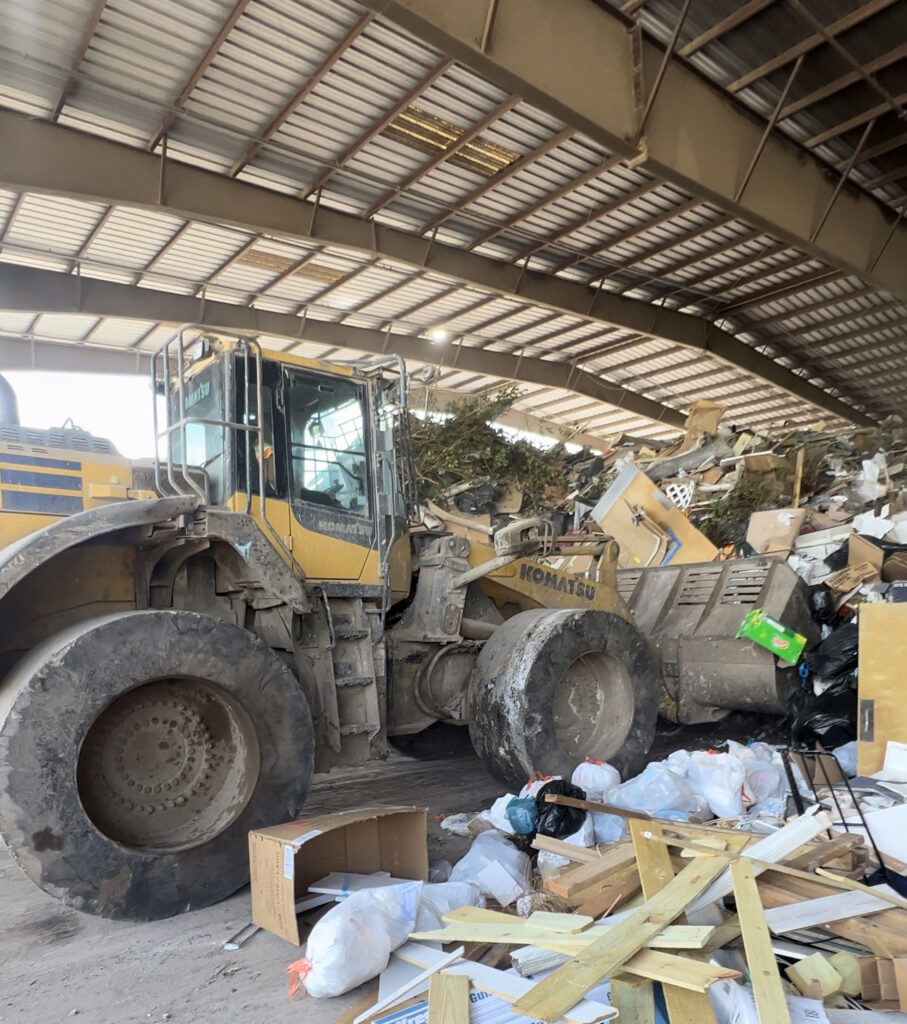
When we realized that almost 30% of worldwide waste comes from construction debris, we started making a conscious effort to minimize the amount of waste we create within our projects.
One of our latest home additions served as the perfect opportunity to be intentional and give old building materials a second chance on life.
With the help of Loctite’s strongest construction adhesive, PL Premium Max, we were able to do just that!


The home addition was designed to be built in the same location as an existing deck.
Given that the house was built in 1970, the foundation and floor joist system of this deck was 53 years old!
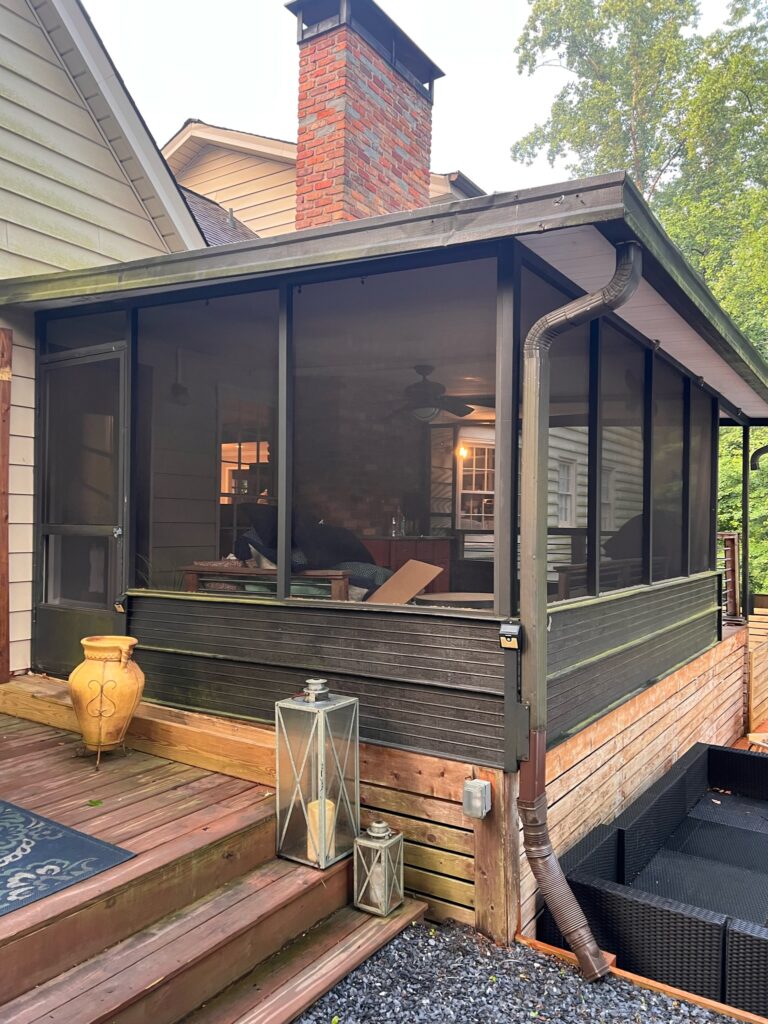

No shade to the contractors of the past because houses built in those days were built to last, but let’s be honest, building codes have changed a lot since then. Let’s just say this structure was not all the way up to code.
Traditionally we would have approached this project with a strategy of completely demolishing the deck and building a brand new structure from the foundation up.
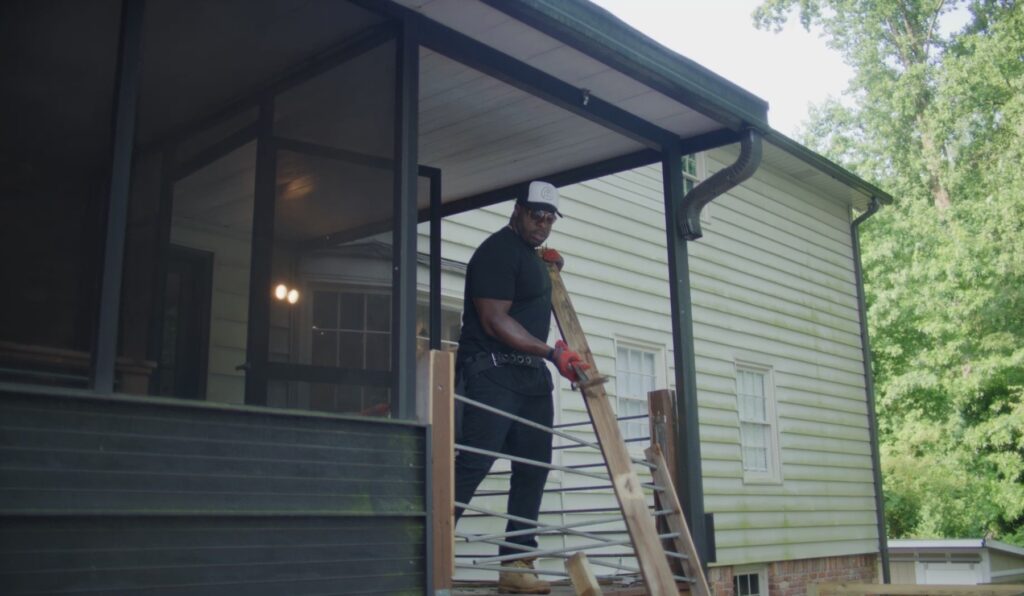

However, this time we thought what if we could use what’s already there and give the existing wood a second chance at life.
Upon inspection of the foundation and floor joists, we saw that all posts were structurally good and set in concrete, and all floor joists were in good condition and free of rot.
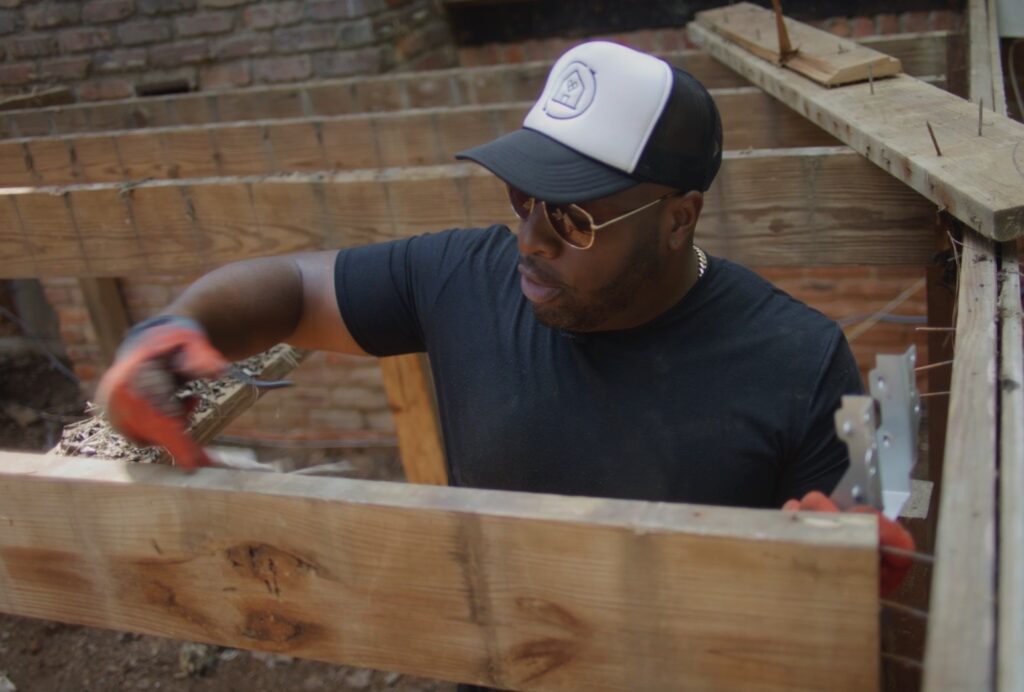

What we did notice was that the floor joists were separated from the band joists (boards that run around the perimeter).
Some were only toe nailed…
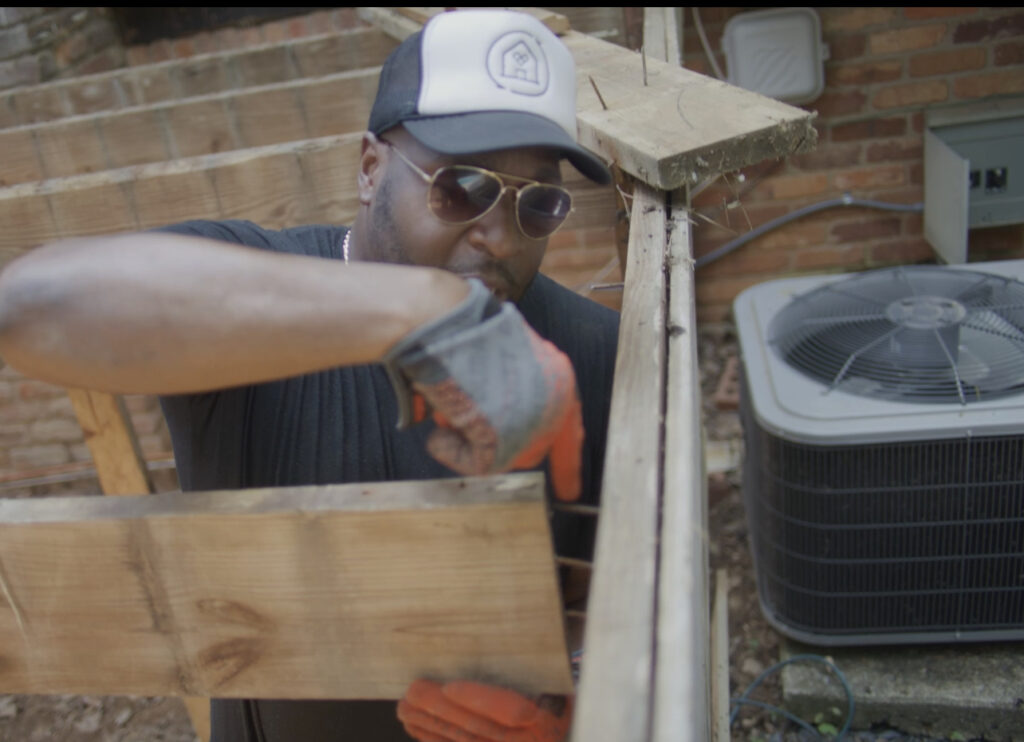

and others were only secured by a bottom plate.
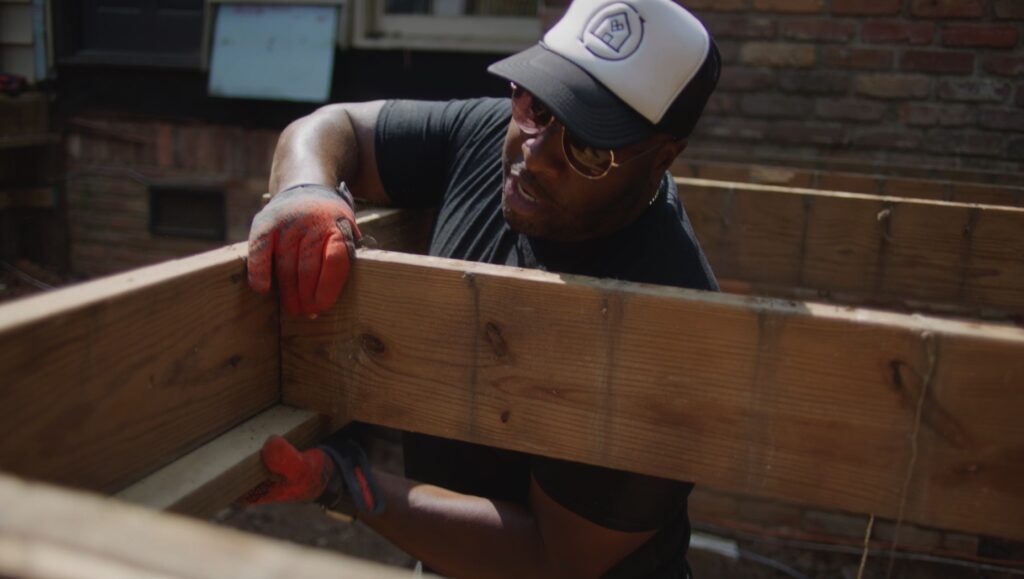

Additionally, all band joists were only single wood members. In building methods today, band joists are double members and floor joists are joined to band joists using joist hangers and structural screws.
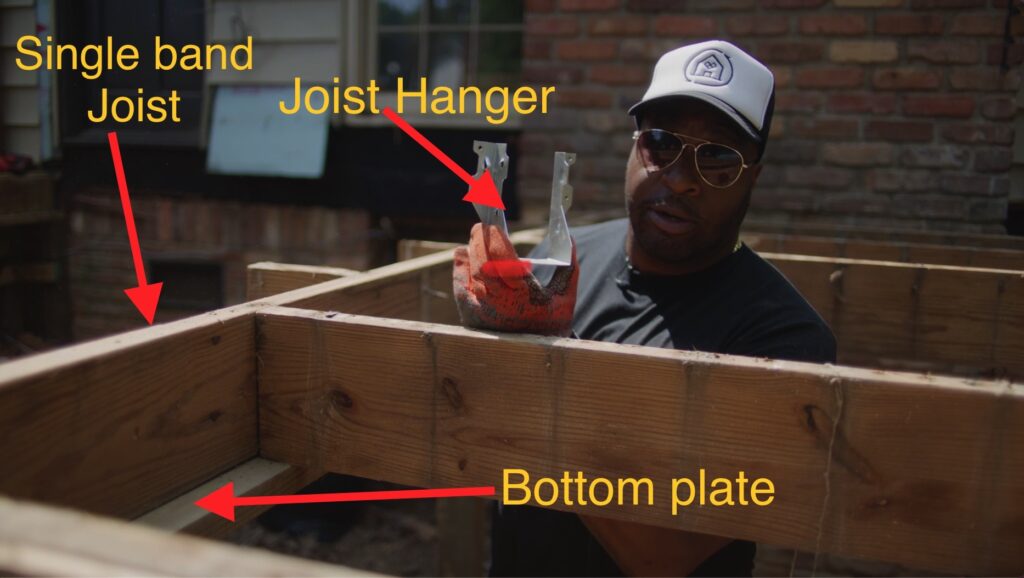

This is where Loctite’s PL Premium Max comes in!
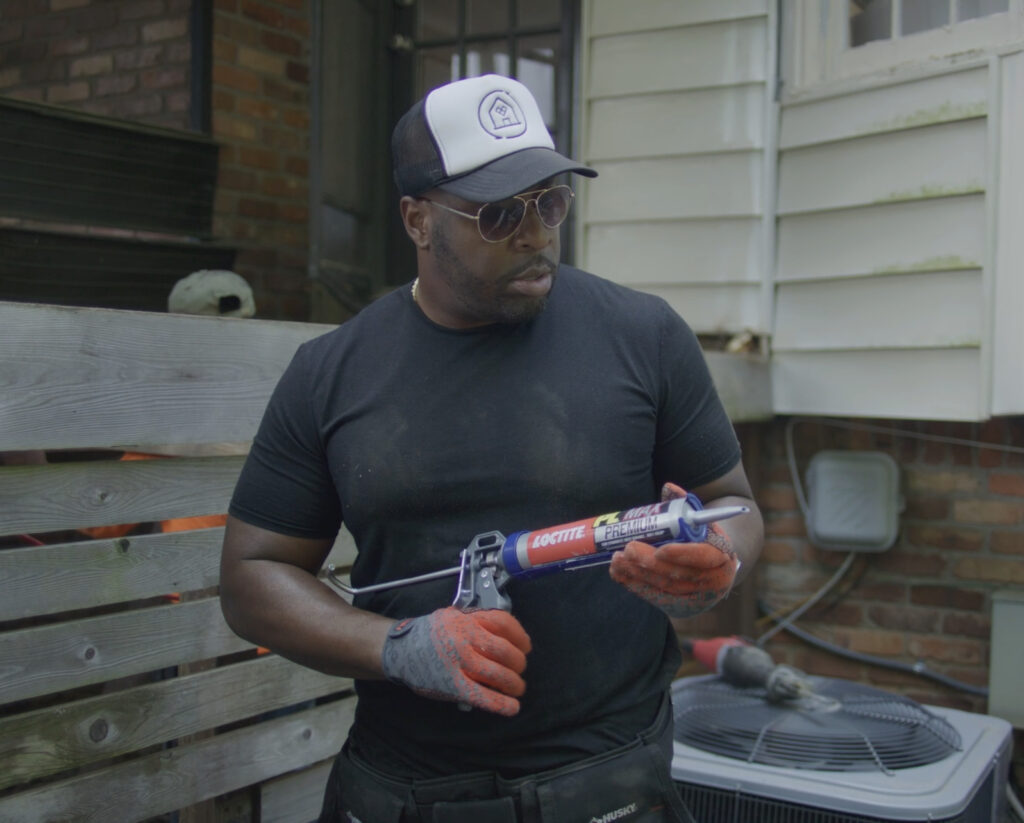

We devised a strategy that allowed us to reinforce the band joists and floor joists with new wood members and incorporate joist hangers for the newly reinforced joists to sit upon. That way we’re bringing this structure up to code and in fact two times stronger than it was before.
We did this by using a technique called sistering. This is the action of joining old boards with new boards to increase the strength of the old wood members making a floor joist system stronger.
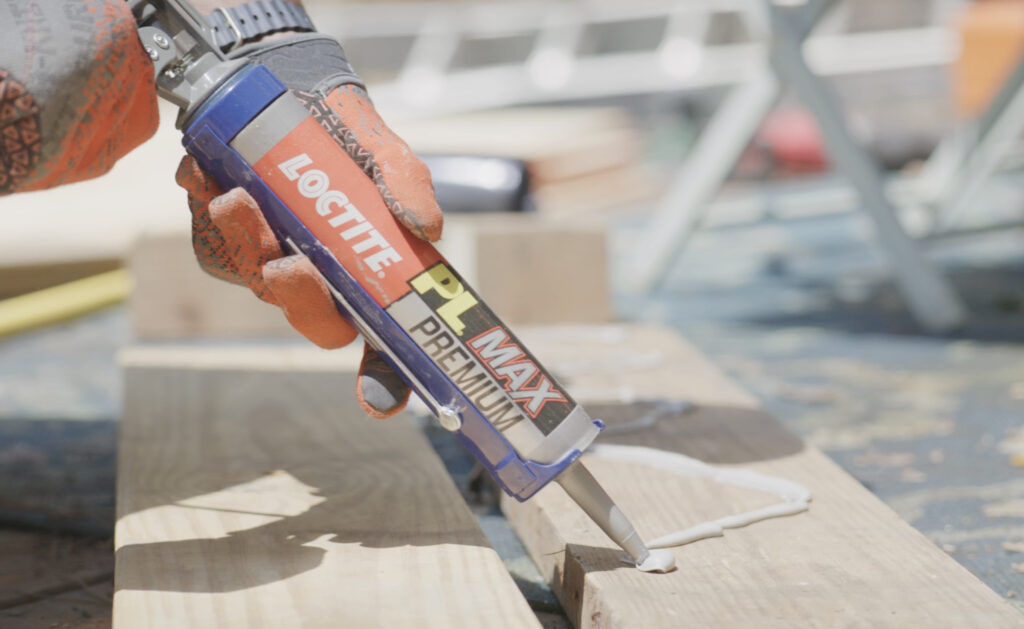

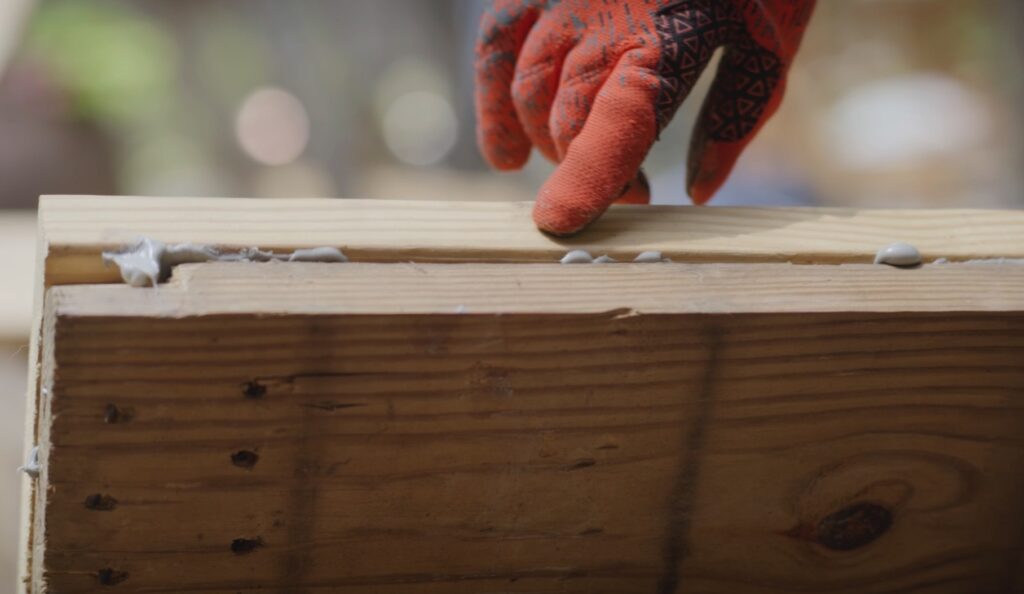


It’s industry best practice to not just fasten wood members together with nails but to add a construction adhesive between the two boards. Doing this ensures the boards don’t separate from each other over time, and that they expand and contract together.



Loctite’s PL Premium Max is perfect for this application for many reasons. PL Premium Max bonds to multiple materials like laminates, drywall, concrete, brick, masonry, stone, marble, fiberglass, stainless steel, metal and wood. It can be used in both interior and exterior applications and you have roughly 20 minutes to reposition your project to make sure you get the right fit.
This adhesive is awesome because it bonds in all weather. It’s waterproof allowing you to apply it directly to wet and frozen surfaces and in temperatures as low as 10 degrees and up to 120 degrees.
So we added a generous amount of adhesive between the joist members as advised, and also added a bead on the joist hangers to ensure they always stay in position.
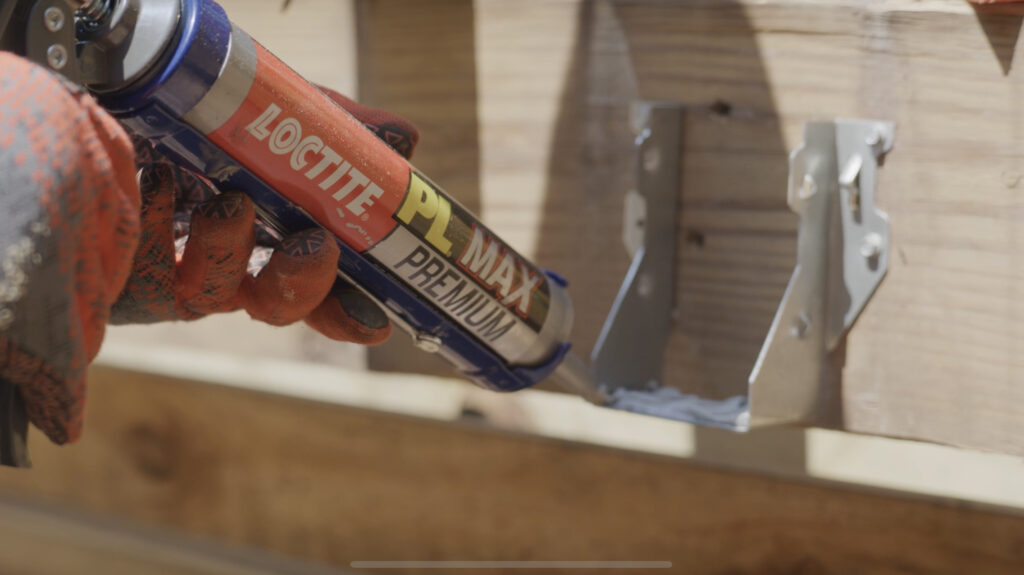

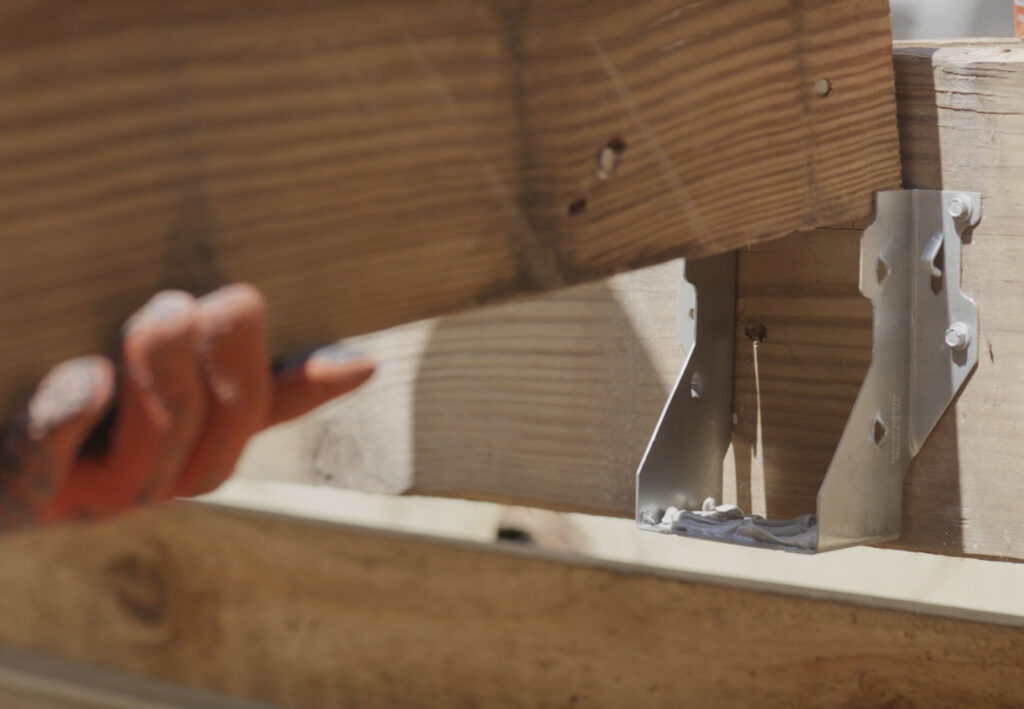

After reinforcing the floor joist, we locked everything together by applying PL Premium Max to the top of the floor joist before laying down the subfloor.
Doing this ensures the subfloor stays locked in place as well as helps prevent spongy and squeaky floors in the future.
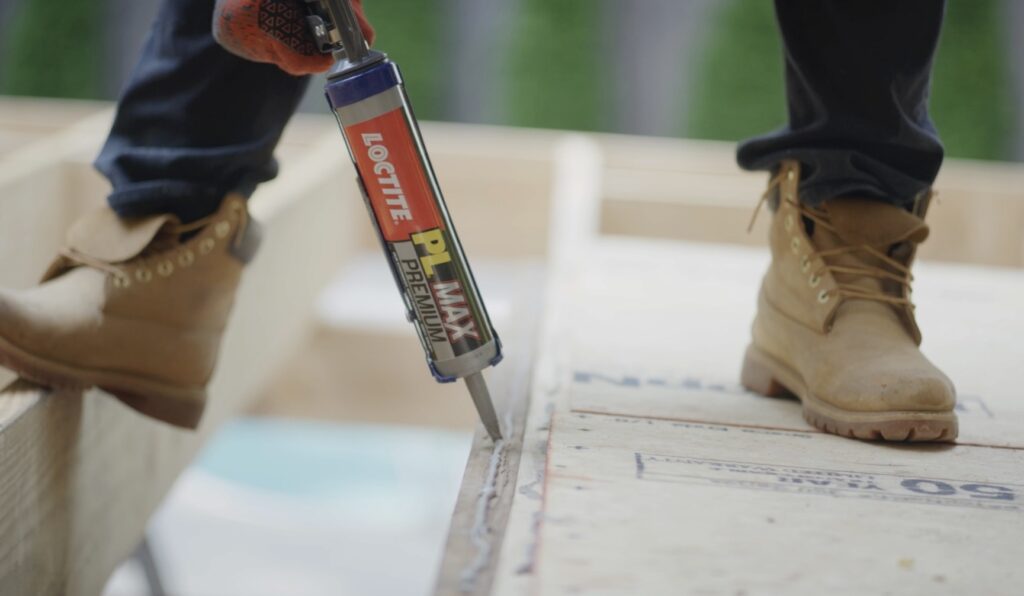

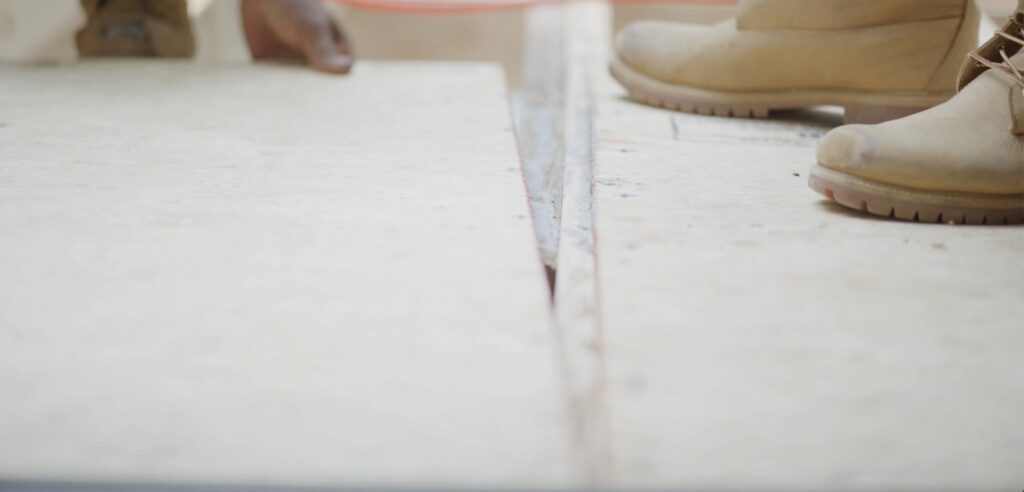

Deciding to go this route created two major benefits:
Cost savings: By not demolish the entire structure, we saved on landfill fees and eliminated the cost and time of buying and setting new posts for a new foundation. This meant time efficiency increased and our labor and material cost was reduced.
Reduced waste: As stated earlier, we could have just tore the old structure down. Instead we choose to give the old foundation and floor joist a second chance at life.
Did you know that it takes anywhere from 50 – 100 years for wood to decompose?
It feels good to know that we did our part to help the environment!
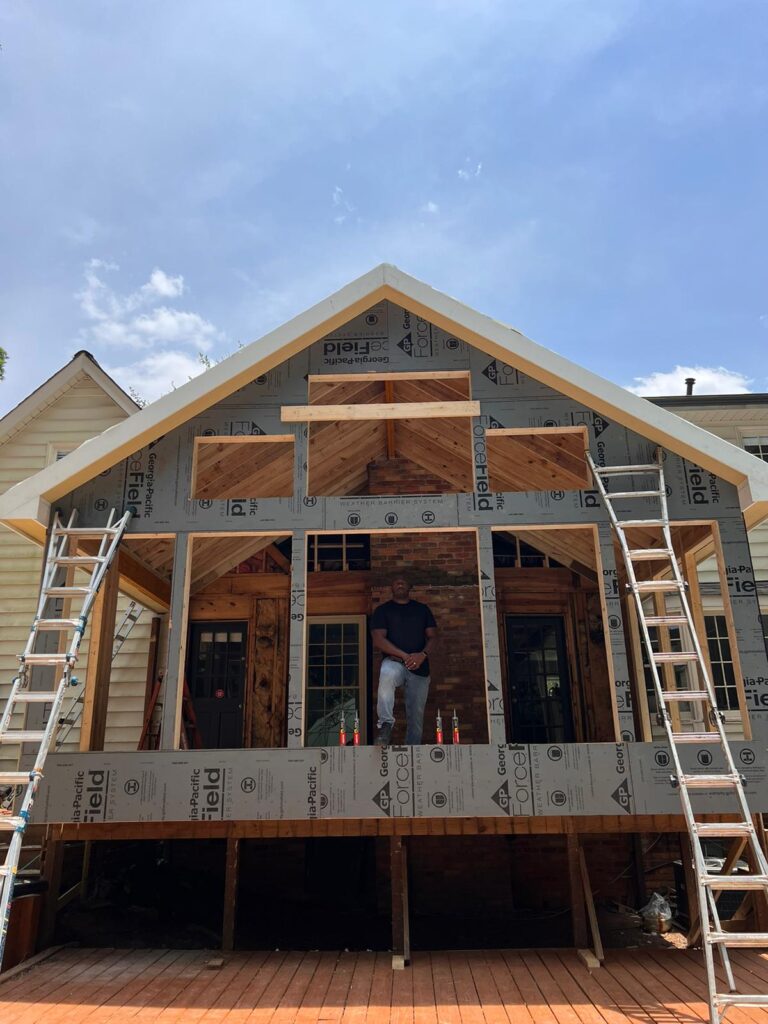

And just like we have a home addition framed, and we’re ready to move into next phases of mechanical roughing, installing windows, roofing and adding the finishes.
Lucky for us…Loctite has products that can help us do the job right in each phase to come!
Make sure to check out our Instagram tutorial on how we brought this project to life!
Take a look at our other Loctite projects on the blog here.
On to our next project….







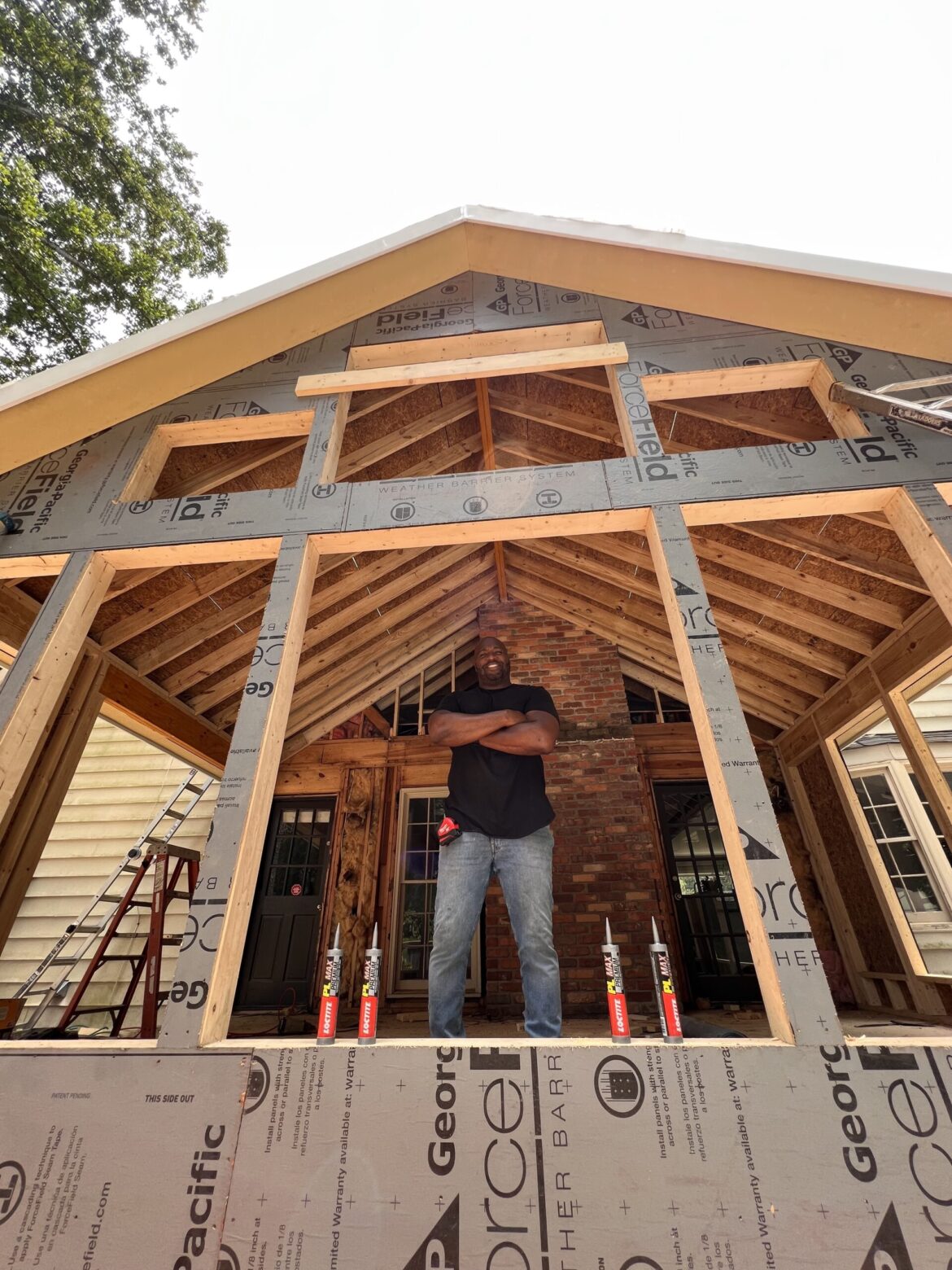

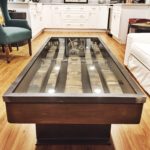




1 Comments
This is such helpful information! Love that you include the “why” and not just the “how” for this project. Sharing this with our readers in our weekly roundup!